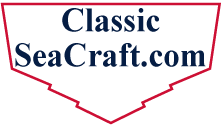 prop question, do rpm matter?
prop question, do rpm matter?
it took me quite a while to find the right prop when i repowered a few years back; was looking to max out around 5500 rpm. i got it finally, but one i bought in the process got me fantastic cruise numbers, just wouldnt turn above 5000 rpm. the high end speed is not much different, but at 4000 rpm, smaller prop got 36 mph. larger "correct" prop got closer to 30. smaller prop takes longer to get on plane and like i said, it wont turn more than 5000 rpm w/ an empty boat, but with gas and all that good stuff, i sure like cruising at 36 mph. somebody explain to me why i need to use the "correct" prop please or im going to switch back to the fuel efficient model.
|

